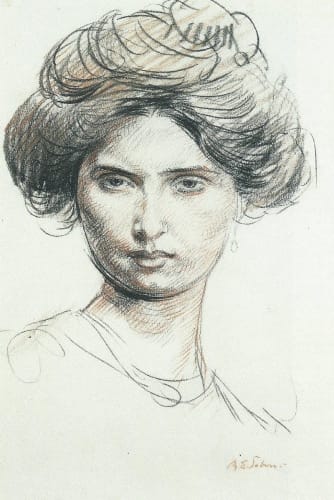With a self-proclaimed contempt for sentimentality, Augustus John spent much of his artistic career painting portraits of people close to him, yet portrayed them in a manner slightly removed from reality. John painted people as imagined characters, an exaggeration of the people in front of him.
From 1910-28, John was entranced by the town of Martigues, Provence, and spent a great deal of time there. In this period, he became Britain’s leading portrait painter, and captured many distinguished subjects. When the Second World War broke out, he became a war artist for the Canadian forces.
John became a member of the New English Art Club, his chief exhibitor from that point onwards. In 1921 he was made an Associate Royal Academician, and 7 years later, a full Academician. He was trustee of the Tate Gallery (1933-41), and was given an Order of Merit in 1942. Following the War (1948-53), he was made President of the Royal Society of Portrait Painters.

